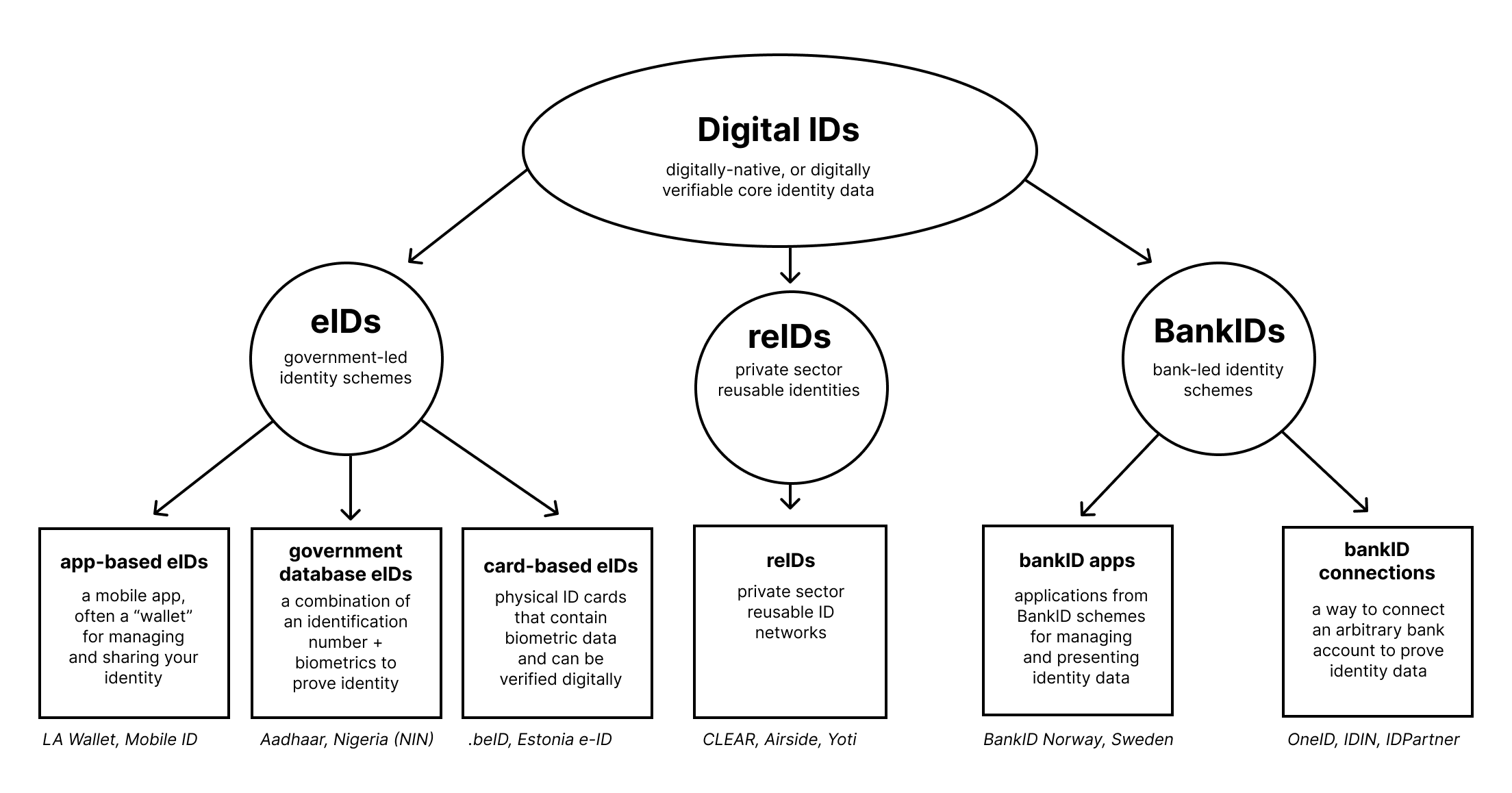Types of Digital IDs

We categorize digital IDs available through Trinsic’s platform into three buckets:
- eIDs - Government-led identity schemes.
- reIDs - Private sector reusable identities.
- BankIDs - Bank-led identity schemes.
Within each of these buckets, there are additional distinctions that are helpful to understand when you’re integrating digital ID acceptance into your product.
- App-based eIDs are mobile applications, oftentimes a “wallet” where a user manages and shares their identity. Typically this means that a user will be directed with a QR code or deep link to a mobile application to complete a verification.
- Government database eIDs typically combine an identification number with biometrics to allow users to prove who they are.
- Card-based eIDs rely on the physical ID card with electronic capabilities allowing a user to complete a digital verification with high certainty. We don’t expose many of these methods, but they are available if needed.
- reIDs or Reusable IDs are private-sector verified identities that can be shared with the user’s consent. These could either be app-based, or simply use a login flow in a web view.
- BankID apps allow users to manage and present identity data from a bankID scheme using a mobile app. This means the user simply authenticates in the application and consents to sharing their data.
- BankID connections utilize open banking to allow a user to connect to an arbitrary bank account and prove their identity data. This typically requires the user to log into their banking provider through a web portal on mobile or desktop.
For each of our ID providers we list the category of digital ID so you have an understanding of each user journey.
Updated 10 days ago